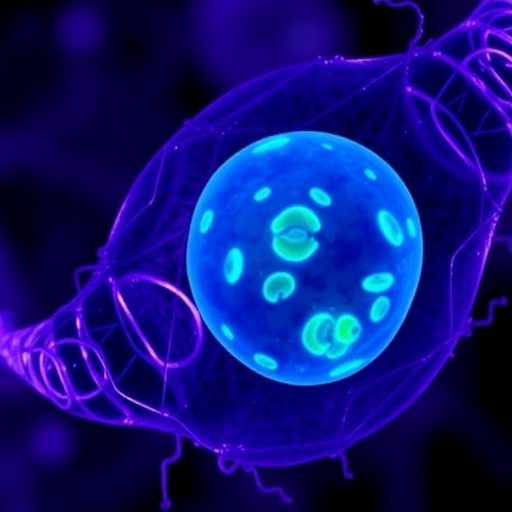In the realm of reproductive biology, the intricate dance of cellular processes during embryonic development remains a captivating yet challenging domain of study. Researchers are continuously uncovering the myriad factors that can influence the outcomes of in vitro fertilization (IVF) and the viability of emerging embryos. A pivotal new study spearheaded by Sun et al. sheds light on the role of Protein Arginine Methyltransferase 5 (PRMT5) in the context of embryonic developmental arrest, particularly focusing on discarded human embryos from IVF-ET procedures. This investigation not only provides significant insights but also unveils the molecular complexities that could potentially inform future reproductive technologies and embryo preservation practices.
PRMT5, a known enzyme involved in protein arginine methylation, has long been recognized for its influence in various biological processes including gene expression, signal transduction, and cell proliferation. However, its specific contributions to early embryonic development had remained largely obscured. The current research presents an extensive analysis of PRMT5 expression patterns in embryos that did not progress successfully, thereby offering a fresh perspective on the molecular roadblocks encountered during the critical early stages of development. This significant gap in knowledge could lead to breakthroughs in enhancing IVF success rates.
The study delineates the experimental approach taken by the research team, which involved the meticulous examination of discarded human embryos. These embryos, failing to develop fully during the IVF-ET protocol, were subjected to rigorous analyses to assess PRMT5 levels. Utilizing cutting-edge techniques, the researchers could illustrate that elevated expression of PRMT5 correlates with developmental arrest in these embryos. This correlation presents a compelling case for the enzyme’s putative role in mediating crucial developmental signals that facilitate successful embryo maturation.
Understanding the implications of PRMT5 activity in embryonic development is vitally important given the rising prevalence of IVF treatments. As many couples rely on assisted reproductive technologies to conceive, elucidating the causes of developmental failure in embryos could transform clinical practices. By identifying molecular markers such as PRMT5, clinicians might refine selection criteria for viable embryos, ultimately improving pregnancy outcomes and minimizing emotional and financial burdens associated with unsuccessful cycles.
A remarkable aspect of this research lies in the methodology employed. By analyzing both morphological characteristics and molecular markers in the discarded embryos, the study harnesses a comprehensive approach to assessing developmental potential. The findings indicate that PRMT5 does not act alone; instead, it engages with various signaling pathways and cellular mechanisms critical for embryogenesis. This multifaceted interaction signifies that the challenge of developmental arrest is likely a consequence of several intertwined biological processes rather than a single defective pathway.
Moreover, the implications of these findings extend beyond immediate practical applications. The study opens new avenues for research into the developmental biology of human embryos. Understanding the biological and environmental factors that influence PRMT5 activity may lead to novel interventions or treatments aimed at bolstering embryo viability. Additionally, as reproductive technologies advance, insights gained from studies like this could pave the way for more effective preservation methods that take into account the biochemical milieu of both embryos and the surrounding uterine environment.
Clinically, the ramifications of uncovering the role of PRMT5 in embryonic development are profound. As infertility rates climb globally, the demand for effective reproductive therapies continues to grow. By focusing on mechanisms that govern developmental progression, such as the role of PRMT5, couples facing infertility might witness enhanced success rates in their quests for parenthood. The possibility of utilizing PRMT5 as a biomarker for embryo selection holds considerable promise, warranting further investigation into its regulation and function at critical stages of development.
In a broader context, the findings echo the increasing recognition of the importance of epigenetic regulators in development and disease. The metabolic and genetic contributors to embryonic health are interconnected, suggesting that a holistic view of reproduction incorporating genetic, epigenetic, and environmental factors is essential for advancements in reproductive medicine. This research provides a crucial piece of the puzzle, revealing how specific enzymes can influence not just individual embryos, but possibly the next generation of human health.
The study conducted by Sun et al. is poised to inspire future inquiries into other relevant biological agents that may act in concert with PRMT5. Embryonic development is a highly orchestrated process involving numerous genes and proteins, and understanding the intricate interplays between these elements is essential for mapping the pathways to successful reproduction. Future research will likely expand upon these findings, exploring not just PRMT5, but the wider landscape of methylation processes and how they impact embryonic fate.
As discoveries in reproductive science continue to prevail, they stand to redefine what we know about fertility and embryogenesis. The emerging understanding surrounding PRMT5 and its role in developmental arrest is a testament to the advancements being made in this field. Researchers are beginning to see the relevance of previously overlooked enzymes, revealing their crucial roles as gatekeepers in developmental processes that have far-reaching implications, not only for infertility treatments but also for understanding genetic diseases.
In conclusion, the pioneering work by Sun et al. illuminates an essential aspect of embryonic development that has significant ramifications for IVF practitioners and their patients. By providing insights into PRMT5 and its contribution to developmental arrest, this research lays groundwork for future avenues of exploration that could ultimately enhance the success of assisted reproductive technologies. As science ventures deeper into the mysteries of early development, healthcare providers and patients alike stand to benefit from the burgeoning knowledge that could transform reproductive health in the coming years.
The fusion of epigenetics and reproductive technology is set to redefine our understanding of fertility. With this pioneering effort, the imperative to continue the exploration of the molecular mechanisms governing embryo development becomes even clearer. The interplay between biology and technology promises exciting prospects for the future, and as new findings emerge, they may yield strategies that can turn even the most challenging cases of infertility into successful stories of conception and parenthood.
As we peer into the future of reproductive science, it is reasonable to anticipate that the insights gleaned from studies such as this will not only enhance our grasp of human biology but also empower the next generation of scientific inquiry, guiding them toward innovative solutions in the arena of reproductive health.
Subject of Research: The role of PRMT5 in embryonic developmental arrest.
Article Title: The Role of PRMT5 in Embryonic Developmental Arrest: Insights from IVF-ET Discarded Human Embryos.
Article References:
Sun, N., Li, S., Li, K. et al. The Role of PRMT5 in Embryonic Developmental Arrest: Insights from IVF-ET Discarded Human Embryos.
Reprod. Sci. (2025). https://doi.org/10.1007/s43032-025-01957-w
Image Credits: AI Generated
DOI:
Keywords:
Tags: discarded human embryos analysisearly developmental stages of embryosembryo preservation techniquesembryonic developmental arrest mechanismsenhancing in vitro fertilization techniquesgene expression during embryogenesisIVF success factorsmolecular insights into IVF outcomesPRMT5 role in embryonic developmentprotein arginine methylation in embryosreproductive biology research advancementssignal transduction in reproductive processes





